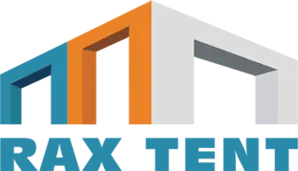
How to Choose the Right Size Geodesic Glass Dome Tent
Share
Deciding the right size for a geodesic glass dome is more than a technical choice — it shapes the guest experience, the look of your site, and the commercial performance of your project. In this guide from RAXDOME & RAXTENT we walk through realistic sizing scenarios, practical trade-offs and deployment tips to help you select the ideal glass dome tent for your terrain, budget and guest expectations.

For operators who want to boost F&B revenue and create memorable moments, compact glass dome tents in the 4–5m range often make more commercial sense: these units work brilliantly as private dining pods or VIP meeting rooms where the intimacy of a panoramic glass dome drives covers and social sharing without a large footprint.

Because they are quick to deploy and easy to multiply across terraces or lawns, small domes let you scale experiences quickly and affordably while creating many distinct touchpoints for guests to discover and photograph.

When the primary goal is overnight revenue and guest comfort, most owners land in the 6–8m domes. A 6m glamping dome typically provides 28 m² of usable floor area, which designers can arrange as a comfortable bedroom with an en-suite bathroom and a compact kitchenette or lounge.

Slightly larger 7m–8m geodesic domes add breathing room for a more generous bathroom, a seating area, or — where site height allows — a mezzanine loft that increases usable space without expanding the footprint.

These mid-size domes are the industry sweet spot for boutique glamping: they balance guest comfort, operational simplicity and photogenic appeal, delivering strong average daily rates and repeat bookings when presented as a true glamping dome experience.

For properties seeking flexible programming — seasonal events, workshops, retreats or family suites — domes from 9 to 12 metres open up many possibilities. At this scale a panoramic glass dome can be planned with distinct functional zones: a dining and lounge area that converts to event seating, a service core for catering, and a quieter sleeping module.

Larger spans allow for zoned HVAC, full plumbing solutions and integrated AV systems, which make these domes commercially attractive as pop-up restaurants, yoga studios, or exhibition pavilions. The ability to reconfigure the interior makes these sizes particularly valuable for operators who want multiple revenue lines from one structure.

Moving into pavilion scale, 13–16m domes operate more like small halls: they are right-sized for weddings, immersive exhibits or greenhouse installations where circulation, service access and crowd flow management become central design considerations. At the landmark scale of 17–20m (and above), a glass dome or large geodesic dome house becomes a destination feature in its own right.

These very large domes can host full-service restaurants, large events and significant exhibitions, but they demand advanced structural detailing and a higher level of project management. RAXDOME and RAXTENT have delivered such large projects internationally; the creative payoff is high, yet owners should be prepared for corresponding CAPEX, specialist installation and a deliberate commissioning process.

Beyond diameter, several operational and site factors should drive your final choice. Soil type and slope determine foundation strategy (timber deck, concrete pad, screw piles or ring foundations); and climate guides glazing, insulation and shading choices — low-E insulated glass with argon fill for cold sites, reflective coatings and external shading for hot, coastal locations. Mechanical systems scale with volume: a 6m dome may only need a compact split AC or basic hydropower system, whereas event or 12m+ domes typically require zoned HVAC, mechanical ventilation and more sophisticated electrical distribution.

Operational strategy and ROI thinking are equally important. Smaller domes allow greater density and faster turnover, which suits high-volume F&B concepts; mid-size glamping domes often maximize nightly revenue with lower complexity; and large domes convert into event revenue but require marketing, bookings coordination and higher OPEX. To make a sound investment decision, model scenarios — expected ADR (average daily rate), occupancy, staffing and maintenance — and compare revenue per square metre across sizes.

Customization and guest experience details are what turn a dome into a brand asset. Consider privacy strategies (blackout curtains, low-reflectivity glass zones), guest comfort (underfloor heating, under-bed storage, compact kitchen modules), and visibility (stargazing skylights, 270° panoramic glazing). For seaside resorts, treatments for corrosion and drainage are essential; in windy or snowy regions, reinforced aluminum framing and wind-rated glaziniable. Working with an experienced partner like RAXDOME or RAXTENT ensures that these technical choices are aligned with the concept so the final glass dome house or glamping dome performs beautifully for years.

Choosing the right geodesic glass dome size is therefore an exercise in aligning storytelling, engineering and business planning. Small domes create multiple shareable moments and efficient revenue; mid-size domes deliver premium overnight experiences that drive higher ADRs and repeat visitors; large domes transform a site into a destination with diverse programming but require disciplined project execution.

If you’d like tailored sizing sketches, 3D renders or a preliminary cost and revenue model for your site, contact RAXDOME & RAXTENT and we’ll prepare options that match your terrain, target guests and budget — turning a diameter decision into a strategic design that sells.

Ready to start your project? Contact RAXTENT today!
